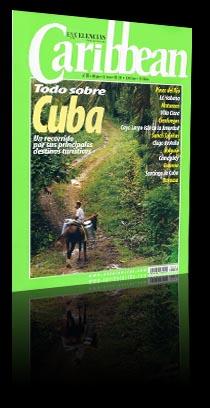A rythm straight to the Herat
There is a splendid language that vibrates in the chords of the melody and speaks of the heart beats: is like a joyful promise like surmising a certainty as a gift of clarity and plenitude. Color has limitations; the words, lips; the music, heaven. The genuine is what never ends and the music is permanently beating in the space.
So genuine and of such a high quality as its rum, tobacco and sugar is the music of Cuba, that nobody can escape from its spell when listening. Wherever Cuban music is played with its unequal rhythms, the hands are clapping, the feet move and little sections are sung, though the meaning is ignored. Very accurate were the words expressed by Don José de la Luz y Caballero, when he stated when referring to this artistic expression: "Music is a language that goes directly to the heart, without paying the brain customs as it happens with poetry".
The First Tunes The first melodies and rhythms played by men that the Cuban land listened were that of the aborigines, but nothing survived from their music. Toward the end of the 18th century what was indigenous was being shaped with the African-French contribution.
Two Forerunners: Manuel Saumell & Ignacio Cervantes Born in Havana in 1817, Saumell is regarded as the precursor of Cuban musical nationalism. His work outlined the profile of what is Creole and fixed and polished elements that make up the Cuban elements.
From Matanzas I Received a Message… Toward the last decades of the 19th century (1879), Miguel Faílde from Matanzas province created the first danzón: las alturas de Simpson, a popular dancing genre, slower and full of cadence and more varied than contradanza or dance; shaped later by José Urfé in the structural organization of its famous danzón El bombín de Barreto. Danzonete, derived from danzón, was created in 1929 by Aniceto Díaz.
Where Are the Singers From? Son is one of the basic forms of the Cuban music, a vocal, instrumental dancing genre which is the musical expession of the ethnical blend of Cuba, of the African inheritance and Spanish roots. Son’s triumphal avalanche still has not been stopped. Let’s mention two which has had the longest trajectory: that of "Adalberto Alvarez y Son" and the "Los Van Van Orchestra," founded by Juan Formell in 1969.
Bolero, Cha – Cha – chá. Mambo. Conga. At the end of the 19th century, in the traditional trova of Santiago de Cuba, the bolero emerged; in this genre merged the Spanish and Afro-Cuban factors in both the accompanying line of the guitar as well as in the melody. Its international triumphed determined the addition of the genre to the creation of significant composers as the talented Mexican Agustín Lara and Puerto Rican Rafael Hernández. As elements of the already known danzón and the notable influence of the chotis madrileño, Enrique Jorrín created at the midst of the 20th century, the dancing and singing genre that he named cha – cha – chá.El mambo, created in the second half of the 20th century by Dámaso Pérez Prado from Matanzas province. Rumba, a genre to be danced or sung, emerged from the roots of Spain and Africa. It is interpreted through the percussion of drums. Also from the festivities of black slaves emerged conga, a genre in which the singing and dance are performed at the rhythm of drums.
Latin Jazz When speaking of jazz, it is a must to name Jesús (Chucho) Valdés, a live legend of the genre in Cuba.
Dos composers: Two Celebrities Ernesto Lecuona and Gonzalo Roig are emblematic figures of the Cuban music. Lecuona, endowed with exceptional gift as a pianist is regarded as the most known Cuban composer in the world.
The Cuban Voices Since the beginning of the 20th century, the popular preference inclined toward the creators of trova-like songs which have its highest exponent in Sindo Garay, Manuel Corona, Rosendo Ruiz and Alberto Villalón. Francisco Repilado was born in Santiago de Cuba in 1907, the famous Compay Segundo as a representative of the most genuine Cuban music. From the second half of the 20th century, the New Trova Movement developed, a group of young trovadores. Two of the most outstanding precursors are Silvio Rodríguez and Pablo Milanés.






























































